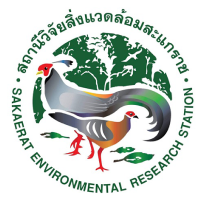Keywords :
Deposition Velocity; Flux; PM2.5; Sulfate; Nitrate; Elemental Carbon; Hygroscopic Aerosol; Complex Terrain; Resistance Model
บทคัดย่อ :
Recent knowledge of the dry deposition of aerosols onto forests, focusing
especially on field measurements in East Asia, is summarized with respect to aerosol
impact on the vegetation in the region. Direct measurements of aerosol deposition in
Japan by means of the gradient method and the relaxed eddy accumulation method
were introduced together with their principles. They indicate that the levels of deposi-
tion velocity of PM2.5 sulfate were in agreement with experimental results in North
America and Europe and were higher than those calculated by theoretical models. The
deposition velocity was probably influenced by humidity due to the growth in size of
hygroscopic aerosols. The calculations taking into account the effect of growth of
hygroscopic aerosols were in reasonable agreement with the measurements. A com-
plex terrain contributed to increasing the range of measured deposition velocities.
However, the measurements agreed with calculated deposition velocities on average
for about 2 weeks. Measurements of vertical profiles of PM2.5 components in a forest
indicate that the dry deposition of NH4NO3 particles was more efficient than that of
(NH4)2SO4 particles, probably due to the volatilization processes of NH4NO3. Finally,
a case study on the dry deposition of elemental carbon estimated by the inference
method in a tropical forest in Thailand was introduced.
เอกสารอ้างอิง :
Matsuda, K. (2017). Dry deposition of aerosols onto forest. In Air Pollution Impacts on Plants in East Asia (pp. 309-322). Springer, Tokyo.



